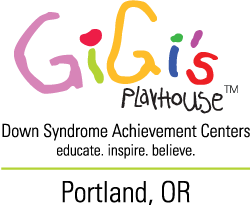Family Speaker Recap: Understanding Your Child’s IEP with April Nordmeier, Learning Specialist

As the new school year approaches, learning specialist, mother, and advocate April Nordmeier shared practical guidance to help families navigate the Individualized Education Program (IEP) process and get ready for a smooth start.
Her main advice: read carefully, ask questions, and trust your instincts.
What Is an IEP?
An IEP (Individualized Education Program) is a legal document outlining the education services and support a student with disabilities will receive in public schools.
Students with Down syndrome often qualify under Other Health Impairment (OHI) or Intellectual Disability (ID). For younger students (under age 9), Developmental Delay is sometimes used. To qualify for adult ID services later, a diagnosis must be in place before age 18 years and 3 months.
Key Parts of the IEP
If available, April recommends reviewing your child’s existing IEP slowly. Make notes on what’s working, what’s not, and write down questions. Focus on these sections:
- PLAAFP (Present Levels of Academic Achievement and Functional Performance):
This section gives a clear picture of current abilities and how the disability affects learning. For example, “can identify 3 out of 10 numbers.” - Annual Goals:
Describes what your child will work on in the next 12 months. Academic goals often cover reading, writing, and math. Goals related to communication, social interaction, or behavior may also be included. - Related Services:
This includes speech, OT, PT, and specialized instruction. Be sure you know how often these are delivered—daily, weekly, or monthly. - SPEJ (Special Education and Related Services Justification):
This section outlines the number of minutes assigned to each support—for example, 150 minutes of math support per week or 60 minutes of speech. - Non-Participation Justification:
Explains how much time your child spends outside general education settings, and why.
Tips for IEP Advocacy
- You’re an Equal Team Member:
You can ask for a meeting at any time (except during preservice week), request evaluations (especially for communication), and bring an advocate or legal representative. - Accommodations vs. Modifications:
- Accommodations help students reach the same goals as their peers using different tools or methods.
- Modifications change the goals themselves.
- Push-In vs. Pull-Out Services:
Ask whether therapists support your child in the classroom (push-in), or remove them for separate sessions (pull-out). - OT Focus:
Occupational therapy often targets writing, typing, and fine motor development. Ask how these needs are being met. - Communication for Bilingual Students:
For bilingual or English as a Second Language (ESL) students, goals should focus on clarity of communication, not perfect English sentence structure.
Preparing Beyond the IEP
April also emphasized the importance of family preparation outside of meetings and paperwork:
- Create a Student Profile
- Share your child’s strengths, triggers, and helpful strategies with school staff. If you are using specific behavior or learning interventions with your child at home, school staff can benefit from using those same strategies.
- Practice School Routines
- Start adjusting sleep schedules a month before school starts
- If consistent bedtimes are challenging, keeping a consistent wake-up time can be just as effective for adjusting sleep schedules
- Start adjusting sleep schedules a month before school starts
- Visit the school, if possible
- Rehearse daily tasks like packing a bag
- Use social stories
Limit Screens Before School
One of the simplest but most effective tips April offered was this: no screens before school. Although it can be tempting to hand over a tablet during a busy morning, screen time—especially in the hour before school—can negatively impact a child’s readiness to learn.
Screens, particularly those involving fast-paced visuals or games, can overstimulate the nervous system. This makes it harder for kids of any ability to shift into the calmer, more focused mindset needed for classroom learning. It can also create a power struggle with school staff first thing in the morning, especially in middle and high school; smartphones are cited as one of the biggest obstacles to learning by educators.
Instead of screen time, April recommends incorporating calming, predictable activities into the morning routine. This might include listening to music, having breakfast, and reading. Eliminating morning screen time can improve attention, emotional regulation, and the ability to separate more smoothly from caregivers at drop-off.
Make Space for Yourself:
Raising a family takes constant care and attention, so building a support system outside your immediate family is essential. Your support system can include friends, extended family, parent groups, and professionals like therapists or coaches.

A Final Encouragement
April concluded with this message:
“You do not need to be perfect to be powerful.”
Your voice matters in the IEP process. With preparation, you can help set the stage for a successful school year.
To reach April Nordmeier directly, email aprilnordmeier@gmail.com
Recent Posts

Recap in Photos: Portland’s GiGiFIT Acceptance Challenge!


